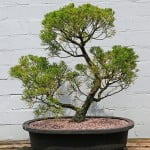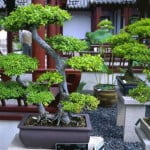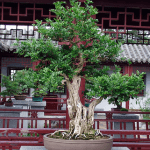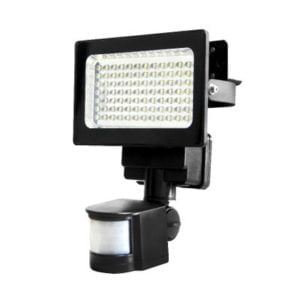The term bonsai literally means “a plant in a tray”. The generally accepted meaning however is a “tree in a pot”. To “bonsai” a plant is to keep the plant from growing in its natural form, therefor controlling its growth to suit the owner.
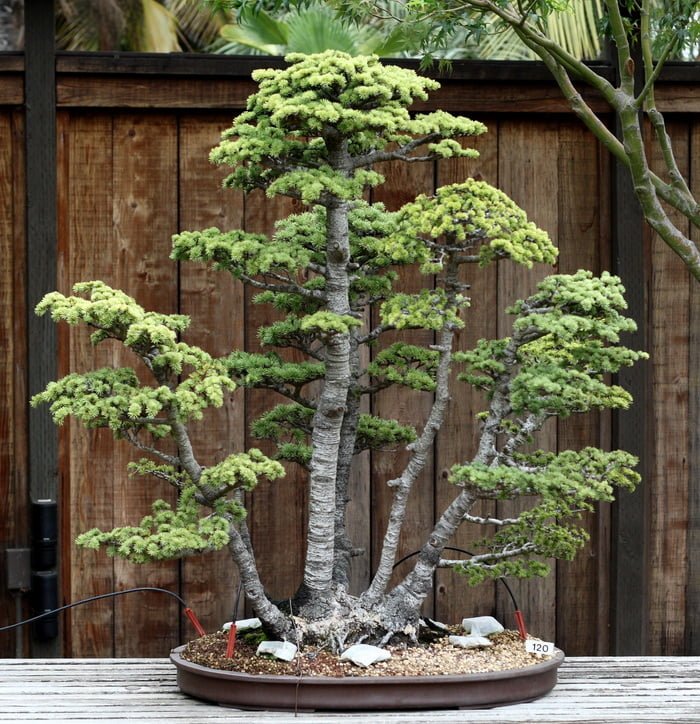
Almost any type of plant can be made into a bonsai. A Japanese Juniper is a traditional tree commonly used for bonsai and makes a great plant for the beginner.
Chinese elms are also a good starting plant for anyone interested in this hobby. If there are any large roots that might prevent the plant from fitting in the bonsai tray, use clippers to remove them.
By clipping the roots back, wiring the limbs and keeping it in containers helps to keep the Bonsai small. A tree becomes a bonsai by applying a variety of horticultural techniques to miniaturize the plant.
A well-grown bonsai plant will miniaturize in all its parts and eventually have the appearance of a mature tree. The goal of bonsai is to create a plant small in size that would suggest a larger natural scene. In other words without a size reference you would have no idea that the tree is a miniature.
The pot should be in scale with the tree. Trim your bonsai gently, removing sick or dying limbs. There are no universal rules about how much to prune a bonsai – the techniques vary according to the species.
Researching how a traditional full grown tree responds to pruning will provide insight into how a specific bonsai species should be pruned.
In young vigorous bonsai, shaping the branches with copper or aluminium wire is an extremely important part of the training process.
Wire’s should not be too tight or remain on the tree too long or scarring will occur. Using good soil is essential. Healthy soil will help plants recover from the trauma of pruning.
Growing bonsai takes dedication and patience but the result is well worth the investment. A Bonsai can live for hundreds of years and can have incredible beauty and value.

[wd_hustle id=’share’ type=’social_sharing’]


